Group exhibition:
ID: E23.6
Title:
Tamuna Chabashvili. Sergey Shabohin. Zhenia Stepanenko
All the Dots Connected Form an Open Space Within
Date:
November 30 — December 30, 2023
Place:
KVOST, Berlin, Germany
Curator:
Marija Petrovic
Artists:
Tamuna Chabashvili, Sergey Shabohin, Zhenia Stepanenko
Works:
Installation Čornaja žoŭć / μέλασ χολη (Black Bile), 2023;
mural Friendship Mound (Three Sisters), 2019 (2023);
video Chronicle of the Monument 'Three Sisters', 2014–2023;
3 collages from the series Plate Tectonics (Social Marble): Mariupol Landscapes, 2022.
mural Friendship Mound (Three Sisters), 2019 (2023);
video Chronicle of the Monument 'Three Sisters', 2014–2023;
3 collages from the series Plate Tectonics (Social Marble): Mariupol Landscapes, 2022.
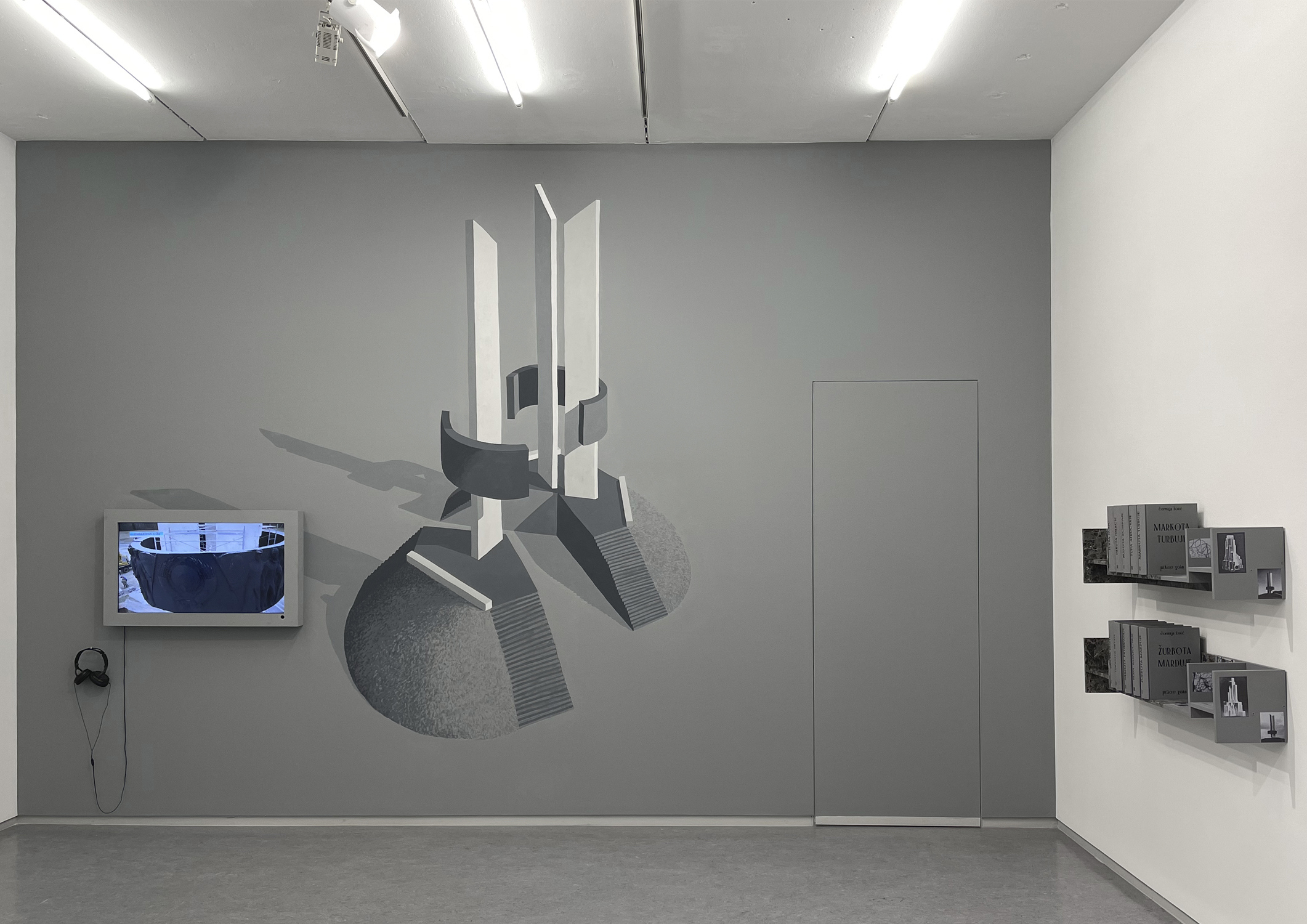
Sergey Shabohin:
type Title,
year
type Title,
year
Explication:
The 24th of February 2022 is often described as the date that suddenly and irreversibly divided time into a „before“ and „after“. However, while it is indisputable that the full-scale invasion of Ukraine by Russia marked the definitive point of no return to a „before“, it also exists in a long line of a still vastly underrepresented history of brutal Russian aggression against its neighboring states that can be traced back centuries.
The exhibition All the Dots Connected Form an Open Space Within investigates how experiences of violence, oppression, and the horrors of war can be addressed artistically, through personal observation of how they affect everyday lives and their surroundings, as well as through the diverse strategies of resistance and care that are created in response. The title describes a shift of perspective away from the certainties provided by the usual points of reference often marked by entries on a map or timeline. This shift is not necessarily to negate these points of reference, but rather to highlight the space in between that typically remains in the shadows. Hereby, the exhibition invites us to question the grand symbolic gestures that are meant to stand alone and proposes a more intimate approach that allows us to dissolve the sharp boundaries of temporality, and view past and present as dynamic and closely connected.
Tamuna Chabashvili (*1979, Georgia) explores shelters that are close to the body in her textile works. As material, she uses second-hand blankets which she collects from friends or finds at local flea markets in Georgia. Such textiles can be found in countless Eastern European households, but during forced migration, they are often used to provide warmth and protection from wind and weather or to store belongings. Beyond its immediate practical functionality, the practice of weaving is closely linked to female storytelling and the artistic material inscription of both personal and collective experiences throughout cultures and history. Textiles therefore act as traces, archives, and tools at the same time. Diverse stories and memories of migration, displacement, and trauma, situated in the cultural context of Georgia – which also experienced an attack by Russia – form the basis of Tamuna‘s work. On one of the blanket canvases, the map of occupied Abkhasia is presented as a dynamic grid of knots. However, the artist‘s work does not follow the usual archival practice of accumulation but is the result of a process of extraction and distillation. Tamunas objects are thus characterized by a personal search for the essential that reveals itself beyond historical references.
In his works, Sergey Shabohin (*1984, Belarus) focuses on the relationship between state control, hidden knowledge, and forms of resistance. His mural Friendship Mound (Three Sisters) floats above the exhibition in shades of gray. It depicts a monument that stands on the tri-border between Belarus, Russia, and Ukraine and is supposed to represent the friendship between the countries as a cake with a piece cut out. The 3D scan of the monument can also be found as part of another work, next to objects resembling books. These carry titles in Belarusian that describe the spectrum of very subtle shades of grief and pain that the language differentiates and that can be traced in their entirety throughout Belarusian literature. The objects are surrounded by a self-adhesive foil with a marble motif that can be associated with social transformation due to its simplicity of use and distribution. However, the heaviness of the marble also symbolizes the deceptive promises of the Soviet regime and the authoritarian Belarusian government apparatus. The pattern is also present in Sergey’s third work for the exhibition, a series of collages made of postcards and newspaper clippings with paintings by Ukrainian artist Archip Kuindschi (1841–1910). As a representative of Romanticism, he is beloved for his paintings of the landscape of Mariupol, where he was born and lived. Those landscapes are as beautiful as they are politically charged. Today, with the brutal destruction and occupation of Mariupol by the Russians, who also looted the museum dedicated to Archip Kuindschi among many others, his paintings have not lost their haunting relevance.
Zhenia Stepanenko (*1996, Ukraine) examines how the relationship to the dacha has fundamentally changed in Ukraine during the invasion. Dachas are small weekend houses in the countryside that offer both relaxation from the hustle and bustle of city life and the opportunity to grow fruit and vegetables. As dachas stand for comfort and well-being, many people fled to them in an attempt to escape the impending invasion. But with the brutal presence of occupants, dachas proved to be anything but safe. Zhenia explores how the loss of security and privacy in these treasured spaces, as well as the fear of a return of occupation, translates into a haunting. An awareness that the boundaries of these places of refuge have crumbled and are unable to hold back the external dangers. Zhenia‘s objects bear witness to this transformation and the accompanying uncanny penetration of all everyday activities. Combining decorative and esoteric objects with rusty tools and weapons, they are playful and seem harmless, but at the same time, they resonate with the necessity of defense and determined strength. The complex protagonist of the work is Zhenia‘s gardener grandfather at his beloved dacha in Chernihiv in the north of Ukraine. This biographical reference adds another layer to the concern about a renewed occupation. To many of the older people in Ukraine, the Russian occupation still brings back fresh memories of the devastating German occupation of the country during the Second World War.
The exhibition is part of the project series “War and Peace. Exchange across borders” which the taz Panter Foundation launched in 2022 with support of the Federal Foreign Office.
The exhibition All the Dots Connected Form an Open Space Within investigates how experiences of violence, oppression, and the horrors of war can be addressed artistically, through personal observation of how they affect everyday lives and their surroundings, as well as through the diverse strategies of resistance and care that are created in response. The title describes a shift of perspective away from the certainties provided by the usual points of reference often marked by entries on a map or timeline. This shift is not necessarily to negate these points of reference, but rather to highlight the space in between that typically remains in the shadows. Hereby, the exhibition invites us to question the grand symbolic gestures that are meant to stand alone and proposes a more intimate approach that allows us to dissolve the sharp boundaries of temporality, and view past and present as dynamic and closely connected.
Tamuna Chabashvili (*1979, Georgia) explores shelters that are close to the body in her textile works. As material, she uses second-hand blankets which she collects from friends or finds at local flea markets in Georgia. Such textiles can be found in countless Eastern European households, but during forced migration, they are often used to provide warmth and protection from wind and weather or to store belongings. Beyond its immediate practical functionality, the practice of weaving is closely linked to female storytelling and the artistic material inscription of both personal and collective experiences throughout cultures and history. Textiles therefore act as traces, archives, and tools at the same time. Diverse stories and memories of migration, displacement, and trauma, situated in the cultural context of Georgia – which also experienced an attack by Russia – form the basis of Tamuna‘s work. On one of the blanket canvases, the map of occupied Abkhasia is presented as a dynamic grid of knots. However, the artist‘s work does not follow the usual archival practice of accumulation but is the result of a process of extraction and distillation. Tamunas objects are thus characterized by a personal search for the essential that reveals itself beyond historical references.
In his works, Sergey Shabohin (*1984, Belarus) focuses on the relationship between state control, hidden knowledge, and forms of resistance. His mural Friendship Mound (Three Sisters) floats above the exhibition in shades of gray. It depicts a monument that stands on the tri-border between Belarus, Russia, and Ukraine and is supposed to represent the friendship between the countries as a cake with a piece cut out. The 3D scan of the monument can also be found as part of another work, next to objects resembling books. These carry titles in Belarusian that describe the spectrum of very subtle shades of grief and pain that the language differentiates and that can be traced in their entirety throughout Belarusian literature. The objects are surrounded by a self-adhesive foil with a marble motif that can be associated with social transformation due to its simplicity of use and distribution. However, the heaviness of the marble also symbolizes the deceptive promises of the Soviet regime and the authoritarian Belarusian government apparatus. The pattern is also present in Sergey’s third work for the exhibition, a series of collages made of postcards and newspaper clippings with paintings by Ukrainian artist Archip Kuindschi (1841–1910). As a representative of Romanticism, he is beloved for his paintings of the landscape of Mariupol, where he was born and lived. Those landscapes are as beautiful as they are politically charged. Today, with the brutal destruction and occupation of Mariupol by the Russians, who also looted the museum dedicated to Archip Kuindschi among many others, his paintings have not lost their haunting relevance.
Zhenia Stepanenko (*1996, Ukraine) examines how the relationship to the dacha has fundamentally changed in Ukraine during the invasion. Dachas are small weekend houses in the countryside that offer both relaxation from the hustle and bustle of city life and the opportunity to grow fruit and vegetables. As dachas stand for comfort and well-being, many people fled to them in an attempt to escape the impending invasion. But with the brutal presence of occupants, dachas proved to be anything but safe. Zhenia explores how the loss of security and privacy in these treasured spaces, as well as the fear of a return of occupation, translates into a haunting. An awareness that the boundaries of these places of refuge have crumbled and are unable to hold back the external dangers. Zhenia‘s objects bear witness to this transformation and the accompanying uncanny penetration of all everyday activities. Combining decorative and esoteric objects with rusty tools and weapons, they are playful and seem harmless, but at the same time, they resonate with the necessity of defense and determined strength. The complex protagonist of the work is Zhenia‘s gardener grandfather at his beloved dacha in Chernihiv in the north of Ukraine. This biographical reference adds another layer to the concern about a renewed occupation. To many of the older people in Ukraine, the Russian occupation still brings back fresh memories of the devastating German occupation of the country during the Second World War.
The exhibition is part of the project series “War and Peace. Exchange across borders” which the taz Panter Foundation launched in 2022 with support of the Federal Foreign Office.
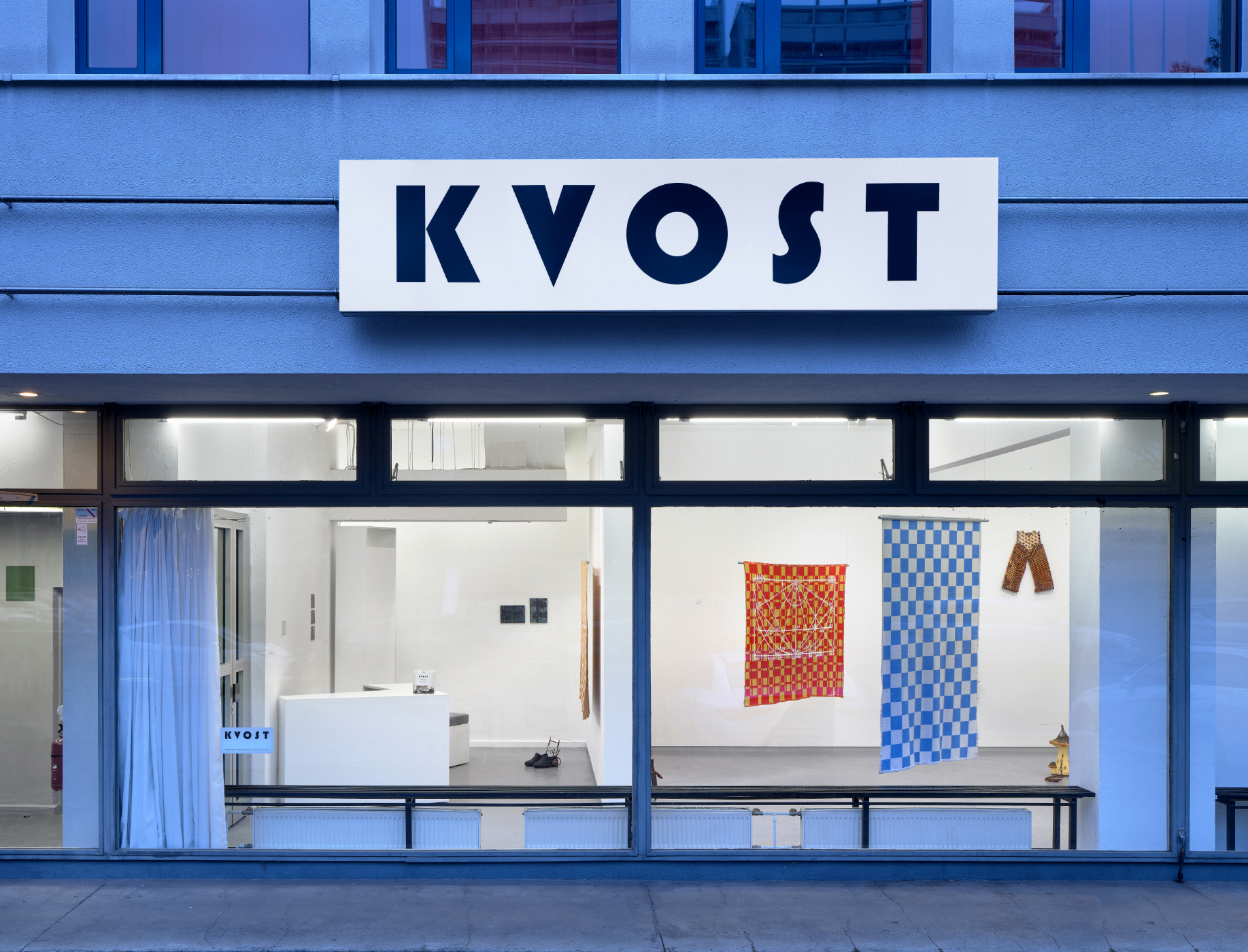
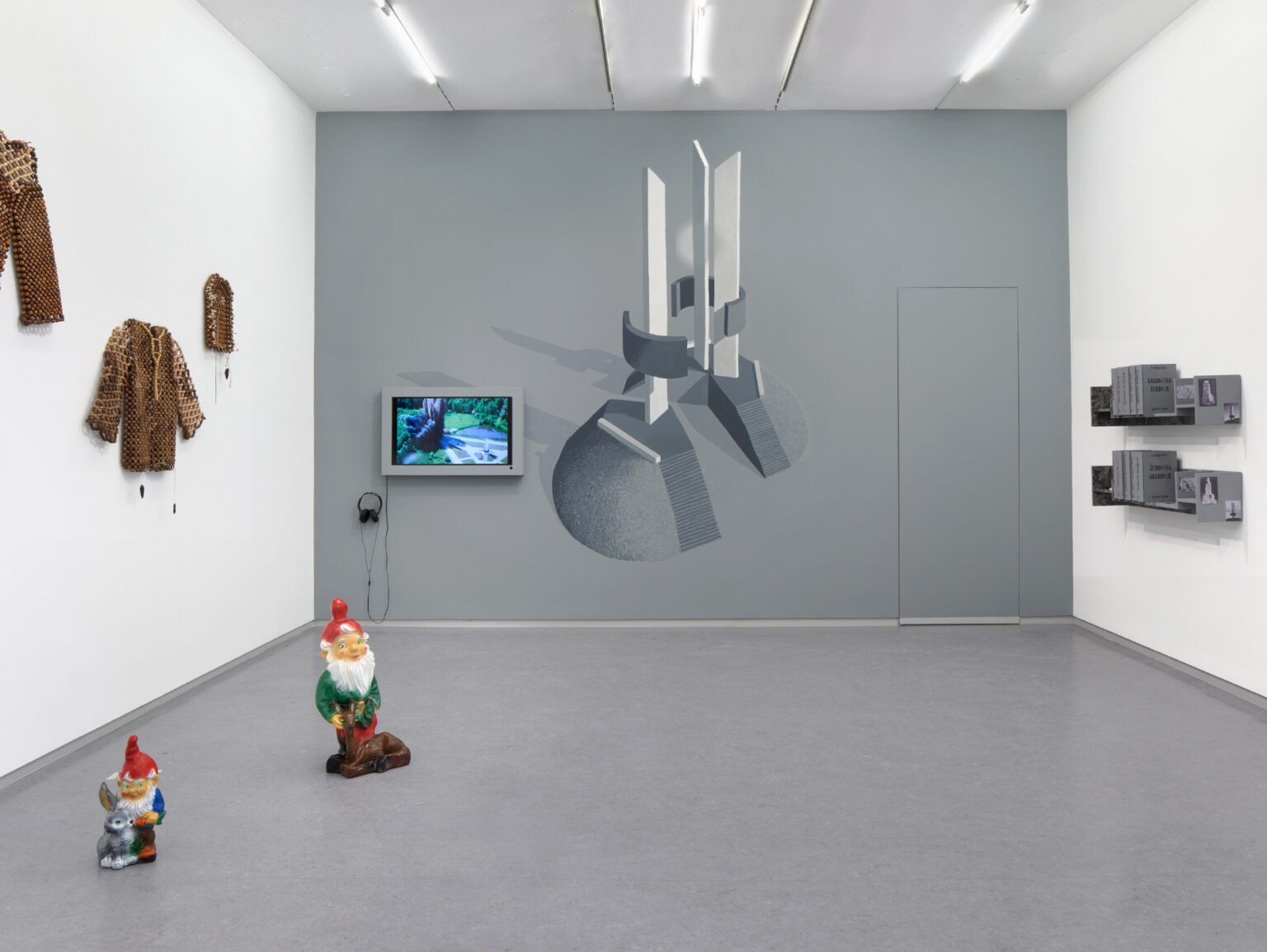
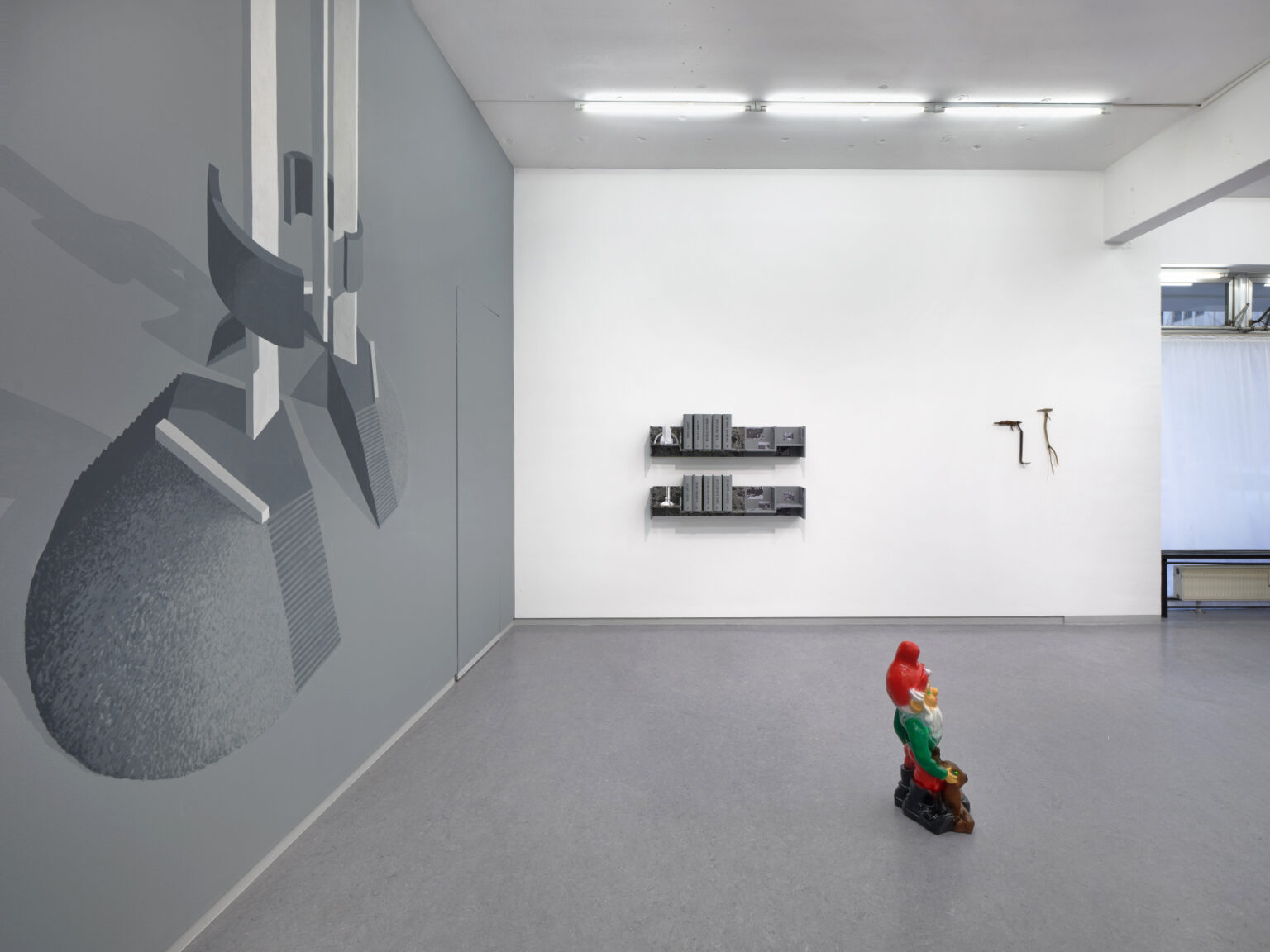
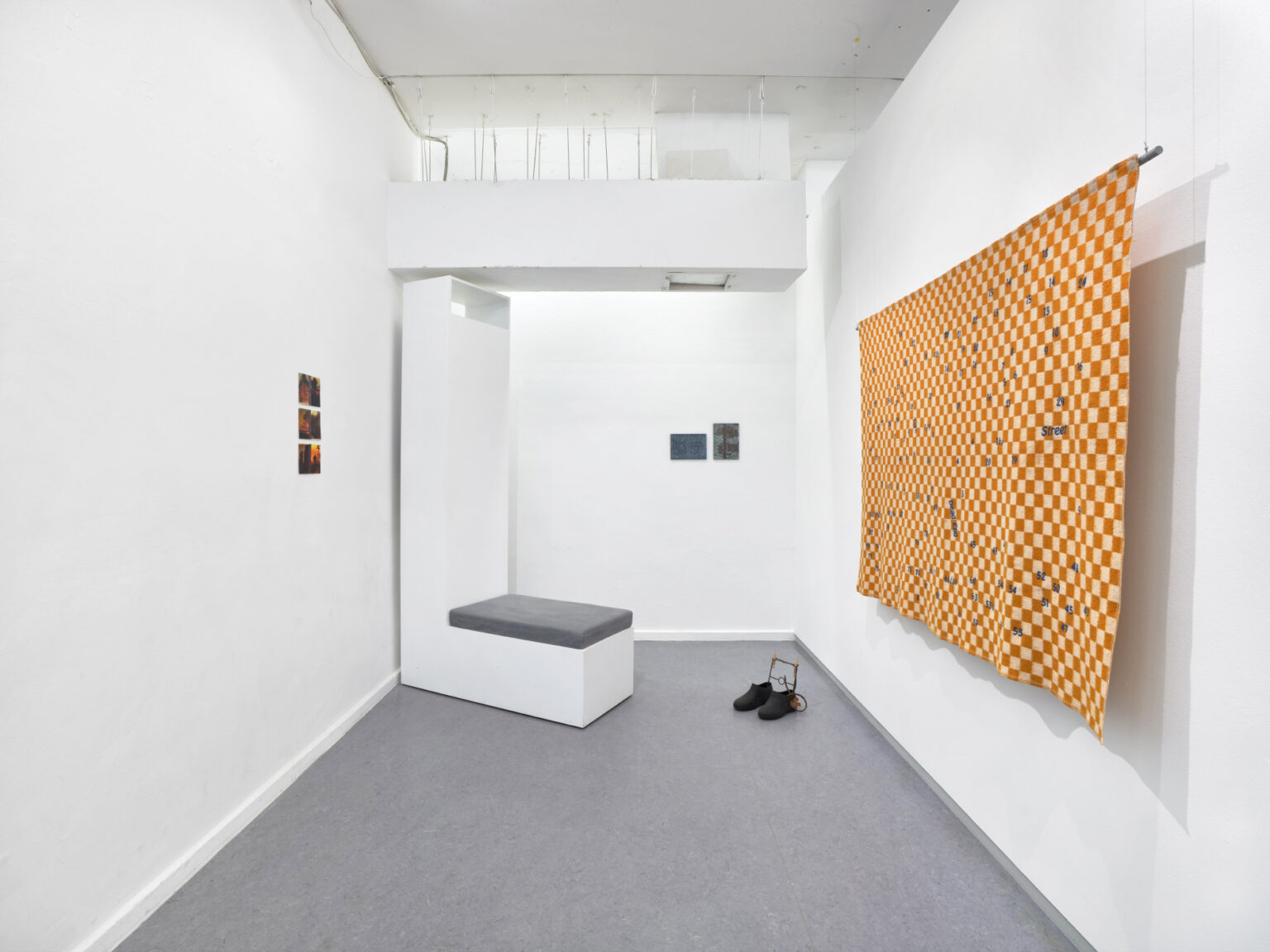
© KVOST
Organizer:
In collaboration with taz Panter Foundation
Link:
Group exhibition:
ID: E23.7
Title:
Białowieża Forest
Date:
December 8, 2023 — January 14, 2024
Place:
Duża Scena UAP Gallery, Poznan, Poland
Curator:
Volha Arkhipava
Artists:
Agata Fogtman, Alesia Bessarab, Alexey Lunev, Alherd Michalovicz, A6, Anna Maria Pilarska, Antanina Slabodchykava, Cezary Stachura, Danylo Heorhiiev, Elizaveta Gorbatsevich, Ewa Greszta, Iza Moczarna-Pasiek, Katarzyna Bagińska, Katarzyna Waraksa, Kirill Diomchev, Lizaveta Stsiatsko, Maria Krześlak, Mikita Iljińczyk, Olek Jager, Sergey Shabohin, Tasha Katsuba, Teresa Nuckowska, Zuzanna Januszko
Works:
Video Atlas of Tectonic Landscapes: Bialowieza Accords, 2023
Poster PUST*, 2017
Poster PUST*, 2017
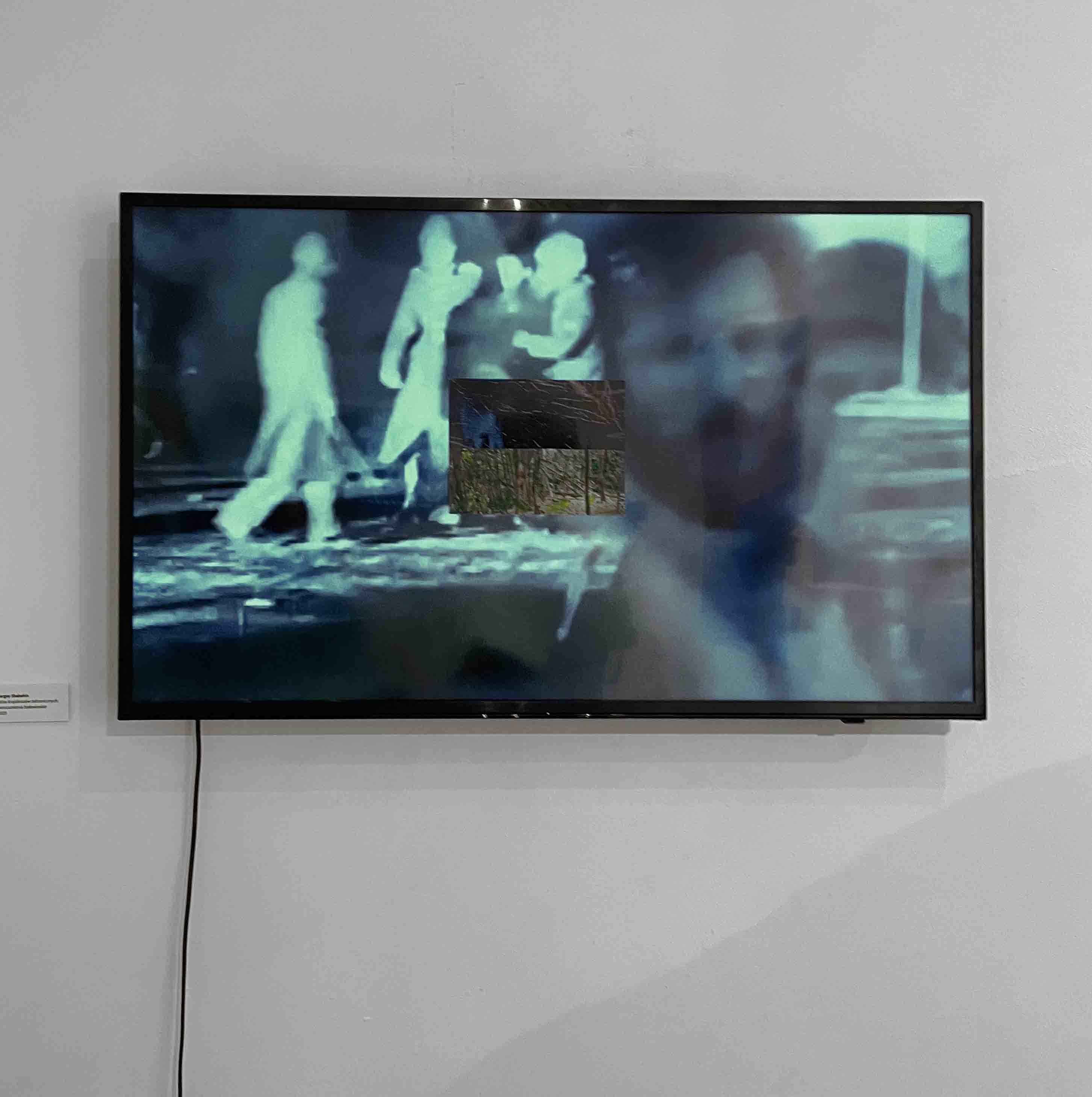
Sergey Shabohin:
video Atlas of Tectonic Landscapes: Bialowieza Accords,
2023
video Atlas of Tectonic Landscapes: Bialowieza Accords,
2023
Explication:
Puszcza Białowieska
Wystawa ma na celu przedstawienie "Puszczy Białowieskiej" jako miejsca szczególnego, które zachowując swoje cechy, należy do kilku państw. Jest to ekoregion, o umownej nazwie "Sarmacki las mieszany", przez który w obecnie przebiega granica między Polską a Białorusią. Granica, która jednak nie dzieli samego ekosystemu.
Puszcza Białowieska to jedyna część naszego kontynentu, w której zachował się pierwotny, reliktowy las pokrywający niegdyś większość terytorium Europy. Unikatowe rośliny i zwierzęta istniały i nadal są obecne w tym miejscu.
Wystawa będzie opowieścią o historii kultur, która jest wyjątkowa, podobnie jak ekosystem Puszczy Białowieskiej. Na przestrzeni wieków granice się zmieniały, ale zwyczaje, właściwe dla tego regionu wciąż istnieją.
W kulturze Polski i Białorusi było wiele wspólnych wydarzeń, pojęć, zjawisk i symboli, bohaterów... Chcę pokazać, że nasze dziedzictwo kulturalne i jej obecny potencjał ma moc przekraczania granic bez ich naruszania.
Projekt PerspAKTIV realizowany jest we współpracy z RAZAM, Ambasadą Kultury oraz Galerią Miejską Arsenał przy wsparciu finansowym Niemieckiego Ministerstwa Spraw Zagranicznych.The project PerspAKTIV is implemented in cooperation with RAZAM, Ambasada Kultury and Galeria Miejska Arsenał with financial support of the German Federal Foreign Office.

Sergey Shabohin:
PUST*, poster,
2017
PUST*, poster,
2017
Organizers:
Ambasadą Kultury, Galerią Miejską Arsenał, projekt PerspAKTIV, RAZAM
Link:
Solo (in duet):
ID: E23.5
Title:
Alexey Lunev
and Sergey Shabohin:
Queer Tracing Paper
Date:
July 14 – 18, 2023
Place:
Barbara Baryżewska gallery, Warsaw, Poland
Curator
Andrii Dostliev
Artists:
Alexey Lunev and Sergey Shabohin

Alexey Lunev and Sergey Shabohin graphic series Queer Tracing Papers,
2023
Explication:
“Was Yanka Kupala the wife of Yakub Kolas” — this blissfully ignorant question casually asked once by someone with a Russian (which else?) imperial background had eventually laid the foundation for this collaborative project by Alexey Lunev and Sergey Shabohin. Kupala and Kolas, both prominent Belarusian poets, both male, both (presumably) heteronormative, most definitely were not a couple but the idea of the work that would queer of Belarusian classics sank in.
But speaking about the entirely imaginary queer history of a nation would not be fair without mentioning its real queer stories — and also its potential queer history, the one with the potential to reveal the blank spots left after decades of colonial and totalitarian erasures. And this is exactly what the artists do.
In Lunev and Shabohin’s new work specifically commissioned by the Barbara Baryżewska gallery in Warsaw, they daringly and nonchalantly set off to create a comprehensive utopian Belarusian queer archive. They playfully mix together real logotypes and drawings from the queer history of Belarus and appropriated and re-imagined within the local context key symbols of the international LGBTQA+ movement. On several large format sheets of tracing paper — but also in accompanying them photographs, assemblages, and objects — reality, fiction, and possibilities come together, overlap, unite in a wierd palimpsest, a polyphonic, slightly disorganised, punkish choir always balancing somewhere between glossolalia and logopedic exercises.
Under other circumstances, this could have been a solid shadow archive of queerness in Belarus extending simultaneously into several different pasts and futures, but artists intentionally refuse to play it serious, they go as far as to queer even the methods of archiving the queer. And the shadow archive suddenly opens into a carnival with pink feathers and glitter and everything you could expect from the grand Olympic gay pride in Minsk from 1980. Which never happened, of course. Or did it?
Andrii Dostliev
But speaking about the entirely imaginary queer history of a nation would not be fair without mentioning its real queer stories — and also its potential queer history, the one with the potential to reveal the blank spots left after decades of colonial and totalitarian erasures. And this is exactly what the artists do.
In Lunev and Shabohin’s new work specifically commissioned by the Barbara Baryżewska gallery in Warsaw, they daringly and nonchalantly set off to create a comprehensive utopian Belarusian queer archive. They playfully mix together real logotypes and drawings from the queer history of Belarus and appropriated and re-imagined within the local context key symbols of the international LGBTQA+ movement. On several large format sheets of tracing paper — but also in accompanying them photographs, assemblages, and objects — reality, fiction, and possibilities come together, overlap, unite in a wierd palimpsest, a polyphonic, slightly disorganised, punkish choir always balancing somewhere between glossolalia and logopedic exercises.
Under other circumstances, this could have been a solid shadow archive of queerness in Belarus extending simultaneously into several different pasts and futures, but artists intentionally refuse to play it serious, they go as far as to queer even the methods of archiving the queer. And the shadow archive suddenly opens into a carnival with pink feathers and glitter and everything you could expect from the grand Olympic gay pride in Minsk from 1980. Which never happened, of course. Or did it?
Andrii Dostliev

Link:
Group exhibition:
ID: E23.3
Title:
Antiwarcoalition.art
at Art Karlsruhe
Date:
Month 4 — 7 May, 2023
Place:
Messe Karlsruhe, Halle 1, Karlsruhe, Germany
Curator:
Artists:
Bergamot (BY), Bouillon Group (GE), Anna Chkolnikova (BY), Rezzan Gümgüm (TR), Yurii Ivantsyk (UA), Zhanna Kadyrova (UA), Alevtina Kakhidze (UA), Maksym Khodak (UA), Toni Meštrović (HR), Vlada Ralko (UA), Red Forest (DE), Anna Scherbyna (UA), Olia Sosnovskaya & a.z.h. (BY), Nastia Teor (UA), Clemens von Wedemeyer (DE), Oksana Chepelyk (UA), Katarzyna Wojtczak (PL), Igor Sevcuk (BA/NL), Group Bouillon (GE), Johan Widén (SE), Lena Davidovich (BY), Zhanna Gladko (BY), Bedia Güven (TR), Myriam Thyes (DE), Daria Maiier (UA) and äsc3ea (UA), Nadya Sayapina (BY), Alisa Sizykh (UA), Helmut Schweizer (DE), Pavlo Kerestey (DE), Andrei Dureika (BY), AnimaeNoctis (IT), Lesia Pcholka (BY), Antonina Stebur (BY), Aleksander Komarov (BY/DE), Maxim Tyminko (BY/DE), Nikita Kadan (UA), Sergey Shabohin (BY)
Work/s:
video BUCHA, 2021
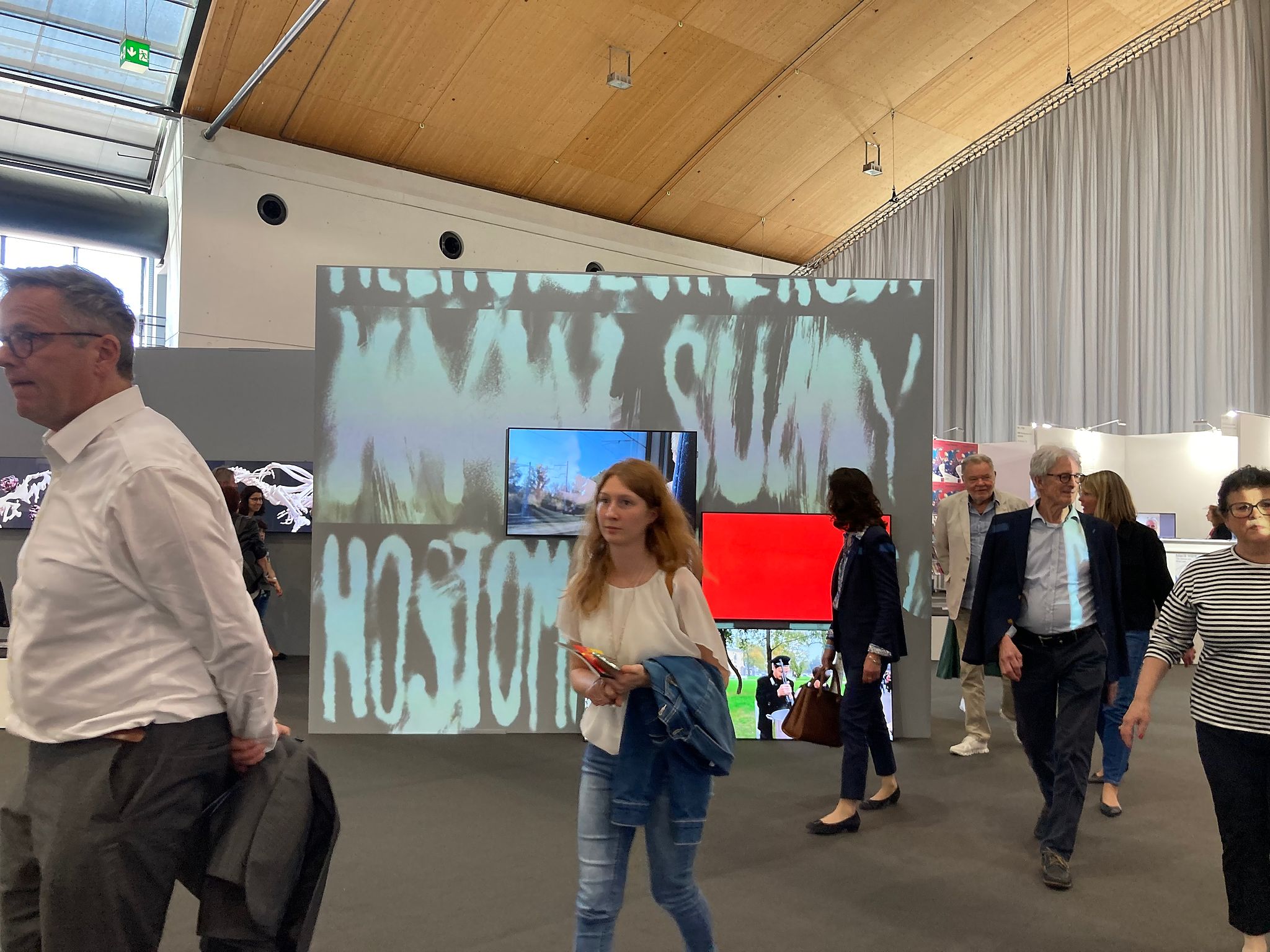
Sergey Shabohin:
type Title,
year
type Title,
year
Explication:
THE INTERNATIONAL COALITION OF CULTURAL WORKERS IN SOLIDARITY WITH UKRAINE
Messe Karlsruhe, Halle 1
https://www.art-karlsruhe.de/de/
Adresse
Messegelände
Messeallee 1
76287 Rheinstetten
Deutschland
The reactionary stage in responding to the war in Ukraine is slowly passing by. Yet the war is not over. It is not abstract, it is still going on. Although it might not seem visible anymore in Europe. Every day hundreds of people are being killed, violated and traumatised. The war is ruining the regimes of stability, taking lives and destroying families and social links. The selection of the artworks from the antiwarcoalition.art platform aims at reminding about the ongoing violence, occupation and violation of human rights just in the “remote neighbourhood”. The works united in the screening attempt to stress on the fact that each of us (all around the world) in one way or another is affected by this war — physically, economically, psychologically. This is a shared tragedy as well as the shared responsibility that enables genocide in the 21st century.
Antiwarcoalition.art in collaboration with ZKM Center for Art and Media Karlsruhe, DE presents 15 video works by artists and 24 slogans written by artists on the issue of the ongoing war in Ukraine. These slogans will be projected on the wall to raise awareness of the ongoing conflict in Ukraine and the need for collective action. The main aim of this action through slogans is to provoke emotional reactions and contribute to dissatisfaction and frustration with Russian aggression and the inertia and indecision of Western politics, but also to express our support for the Ukrainian people.
Antiwarcoaltion.art is an open online platform that collects, shares and distributes statements against the war created by artists from all over the world. Driven by the Russian aggression and war against Ukraine, this platform presents an opportunity to protest against war, dictatorship, and authoritarianism. It is an opportunity to express solidarity with those in Ukraine who are affected by the Russian military aggression, and with those resisting colonial, patriarchal, imperialistic, and political repressions and terror elsewhere.
One of the members of the curatorial team of the The International Coalition of Cultural Workers Against the War in Ukraine is Tatiana Kochubinska (*1985, Kyiv, Ukraine). After the outbreak of the war in Ukraine Tatiana was curator-in-residence at ZKM | Center for Art and Media Karlsruhe from June to August 2022. Currently Tatiana Kochubinska lives and works in Dresden, Germany, where she is co-curating the exhibition Kaleidoscope of (Hi)stories. Ukrainian Art 1912–2023 at Staatliche Kunstsammlungen Dresden – Albertinum.
Messe Karlsruhe, Halle 1
https://www.art-karlsruhe.de/de/
Adresse
Messegelände
Messeallee 1
76287 Rheinstetten
Deutschland
The reactionary stage in responding to the war in Ukraine is slowly passing by. Yet the war is not over. It is not abstract, it is still going on. Although it might not seem visible anymore in Europe. Every day hundreds of people are being killed, violated and traumatised. The war is ruining the regimes of stability, taking lives and destroying families and social links. The selection of the artworks from the antiwarcoalition.art platform aims at reminding about the ongoing violence, occupation and violation of human rights just in the “remote neighbourhood”. The works united in the screening attempt to stress on the fact that each of us (all around the world) in one way or another is affected by this war — physically, economically, psychologically. This is a shared tragedy as well as the shared responsibility that enables genocide in the 21st century.
Antiwarcoalition.art in collaboration with ZKM Center for Art and Media Karlsruhe, DE presents 15 video works by artists and 24 slogans written by artists on the issue of the ongoing war in Ukraine. These slogans will be projected on the wall to raise awareness of the ongoing conflict in Ukraine and the need for collective action. The main aim of this action through slogans is to provoke emotional reactions and contribute to dissatisfaction and frustration with Russian aggression and the inertia and indecision of Western politics, but also to express our support for the Ukrainian people.
Antiwarcoaltion.art is an open online platform that collects, shares and distributes statements against the war created by artists from all over the world. Driven by the Russian aggression and war against Ukraine, this platform presents an opportunity to protest against war, dictatorship, and authoritarianism. It is an opportunity to express solidarity with those in Ukraine who are affected by the Russian military aggression, and with those resisting colonial, patriarchal, imperialistic, and political repressions and terror elsewhere.
One of the members of the curatorial team of the The International Coalition of Cultural Workers Against the War in Ukraine is Tatiana Kochubinska (*1985, Kyiv, Ukraine). After the outbreak of the war in Ukraine Tatiana was curator-in-residence at ZKM | Center for Art and Media Karlsruhe from June to August 2022. Currently Tatiana Kochubinska lives and works in Dresden, Germany, where she is co-curating the exhibition Kaleidoscope of (Hi)stories. Ukrainian Art 1912–2023 at Staatliche Kunstsammlungen Dresden – Albertinum.
Link:
Solo:
ID: E23.1
Title:
Sergey Shabohin:
Atlas of Tectonic Landscapes
Date:
February 3 – March 5, 2023
Place:
Municipal Gallery Arsenał, Poznan, Poland
Curator:
Marek Wasilewski
Artist:
Sergey Shabohin

Sergey Shabohin:
Atlas of Tectonic Landscapes,
2023
Atlas of Tectonic Landscapes,
2023
Explication:
Link:
